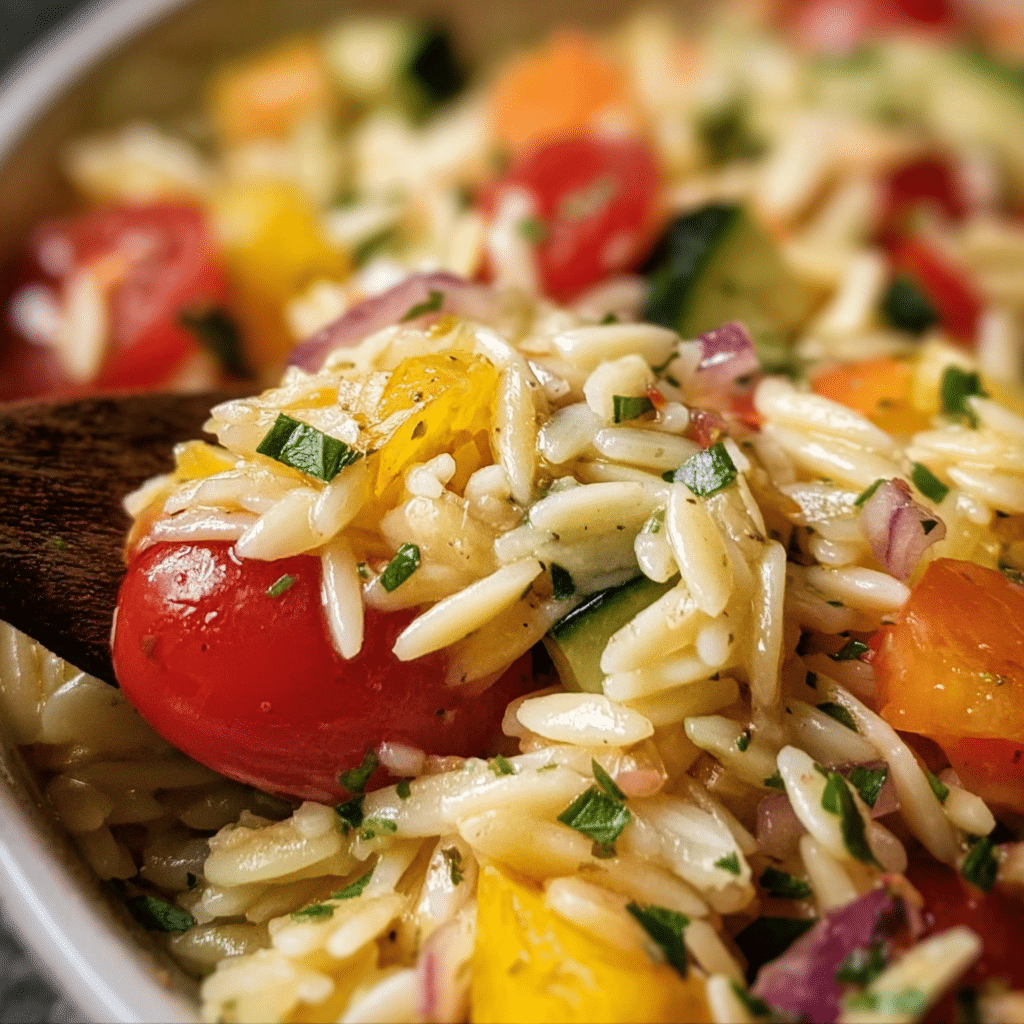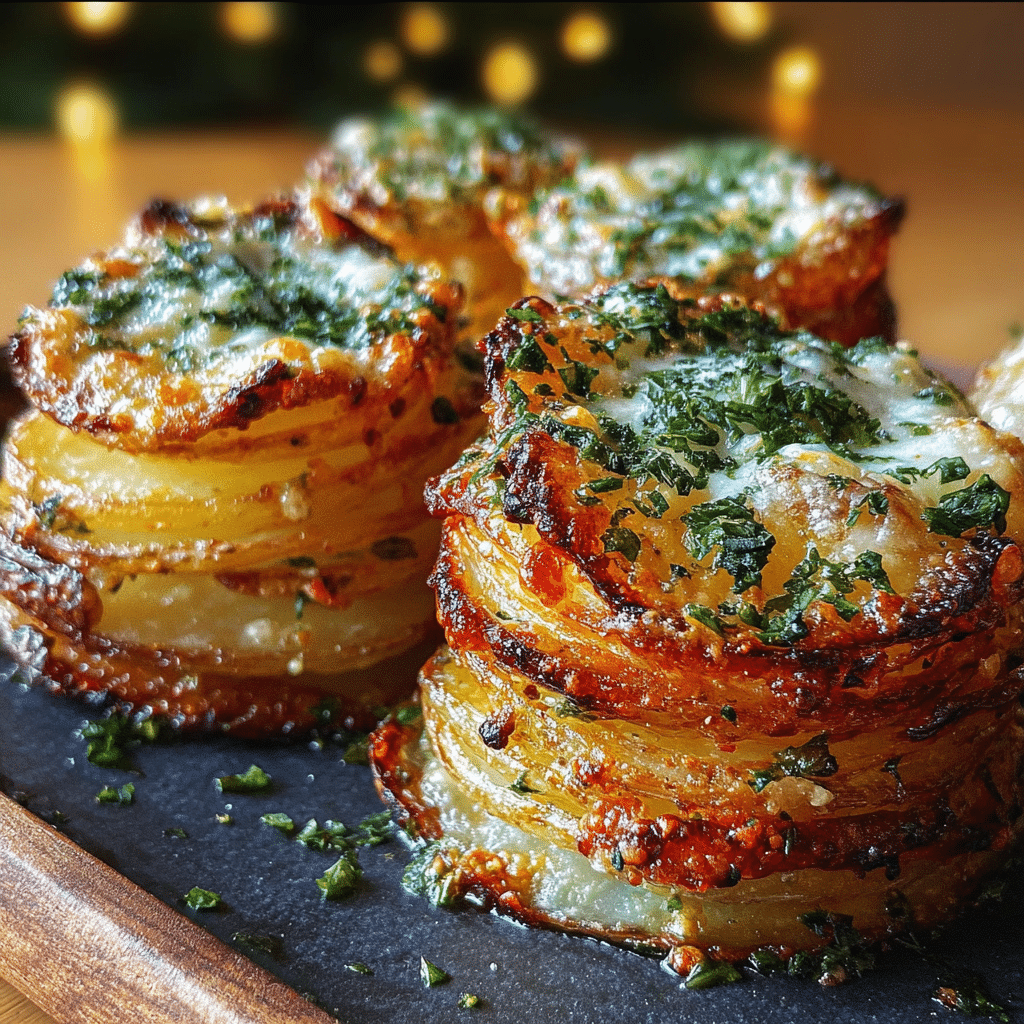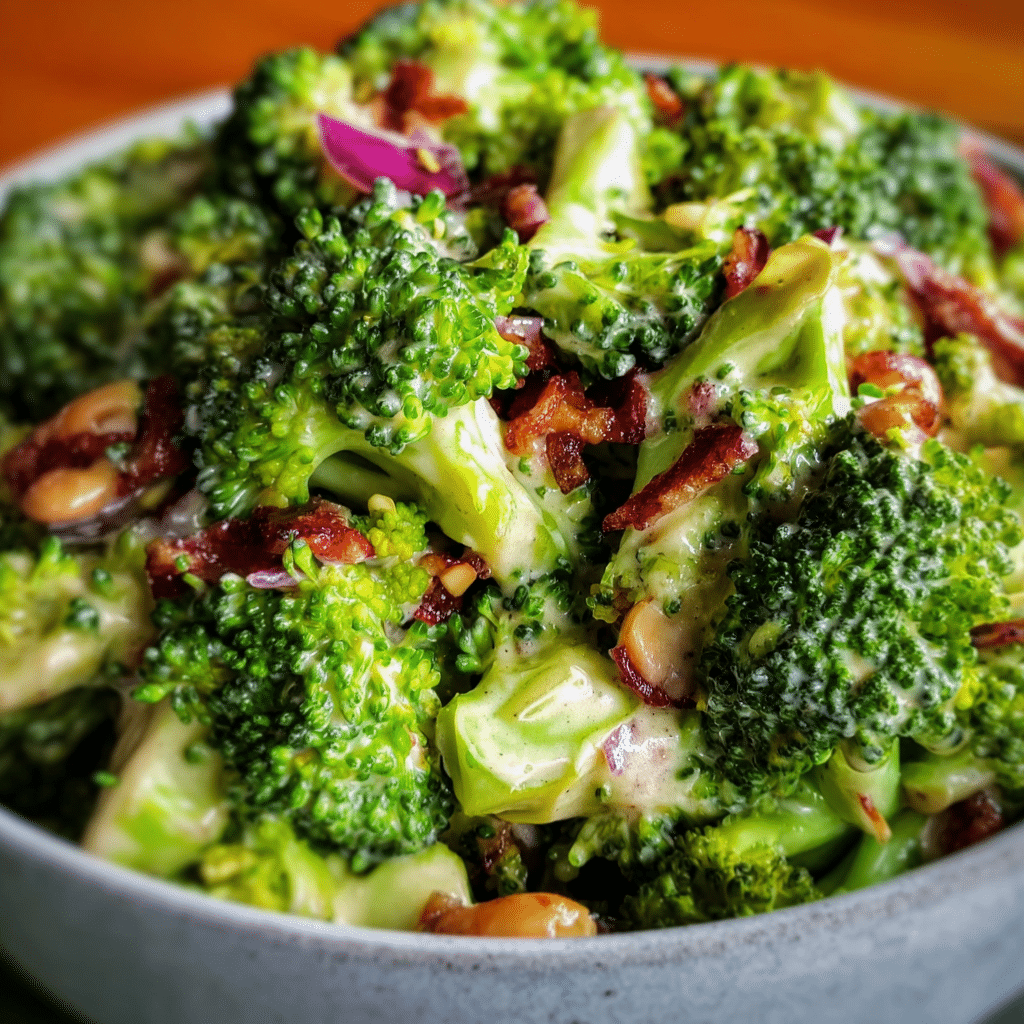Healing garlic soup is more than just a dish; it’s an experience, a memory, and a comfort all wrapped up in a bowl. I remember the first time I stumbled upon this incredible recipe. It was a chilly evening in late autumn, and I was feeling the effects of the season—sniffling, sneezing, and generally under the weather. My grandmother, a culinary wizard and a firm believer in the healing powers of food, decided it was time to whip up her famous healing garlic soup. As the aroma of garlic wafted through the air, I felt an immediate sense of warmth and nostalgia. Little did I know, this bowl of soup would not only soothe my cold but also introduce me to a culinary tradition steeped in history and cultural significance.

The Story Behind This Recipe
As I watched her prepare the healing garlic soup, she shared stories of its origins. She explained how garlic, revered for its medicinal properties throughout history, served as the primary ingredient. The soup, she said, was a staple in her household during the colder months—when colds were rampant and hearty meals were necessary to combat the chill. This dish was not just about nourishment; it was a remedy for the soul as much as it was for the body.
My grandmother’s recipe was simple yet magical. With just a handful of ingredients—garlic, broth, herbs, and a touch of love—she transformed a few humble items into a dish that felt like a warm hug from the inside. It was during these experiences that I learned that cooking is not just about the end product but about the stories we share, the love we pour into our meals, and the memories we create along the way.
What makes healing garlic soup particularly special is its versatility. In a world where families often find themselves rushing through dinner prep, this soup stands as a beacon of hope. It can be made in under 30 minutes, making it perfect for busy weeknights when you want something healthy and comforting without spending hours in the kitchen. You can customize it to your family’s taste, adding vegetables like spinach or carrots, or even a protein like chicken or beans for a heartier version.
Seasonally, healing garlic soup shines brightest during the fall and winter months, when colds and flu are prevalent. However, its light and soothing nature means it can be enjoyed year-round. Whether you’re fighting off a cold or simply craving a cozy meal, this soup fits the bill. It’s the kind of dish that evokes feelings of nostalgia, reminding us of family gatherings and shared meals. The emotional connection runs deep, making it a beloved recipe that is often passed down through generations.
In this guide, you’ll learn everything you need to know about healing garlic soup—from its rich history and cultural significance to variations and nutritional benefits. I’ll share my personal tips and tricks to make the perfect bowl every time, ensuring your family will love it as much as mine does.
The Rich History and Cultural Significance of healing garlic soup
The rich history and cultural significance of healing garlic soup weave a fascinating narrative that spans centuries and continents. This dish is not merely a collection of ingredients but a testament to culinary traditions that celebrate health, wellness, and community. The origins of healing garlic soup can be traced back to various cultures that have long recognized the medicinal properties of garlic. From ancient Egyptian civilization, where garlic was prized for its health benefits, to traditional European soups designed to ward off illness, garlic has always been a staple in the kitchens of those who value both flavor and function.
Origins and History
The use of garlic in cooking dates back thousands of years, with evidence found in ancient texts and archaeological sites. In ancient Greece and Rome, it was commonly consumed by athletes and soldiers for its invigorating properties. Moving through history, we find that different cultures have developed their own interpretations of garlic soup. For instance, the famous Spanish ‘sopa de ajo’ is a rustic version that highlights the bold flavors of garlic, paprika, and often includes a poached egg. Similarly, the Italian ‘acquacotta’ showcases the simplicity of garlic paired with seasonal vegetables, embodying the spirit of Italian cuisine.
As it evolved, the concept of healing garlic soup took on various forms, adapting to local ingredients and tastes. In many cultures, it became associated with home remedies, particularly in times of illness. For instance, in Eastern European traditions, garlic soup is often served to those recovering from colds or flus, viewed as a natural way to boost the immune system. This soup became a culinary bridge, connecting family members during times of need, reinforcing its status as a comfort food.
Cultural Significance
Healing garlic soup carries with it the weight of cultural significance, making it a dish that resonates on many levels. In many families, it serves as a reminder of care and support during tough times. It’s often made with love when someone is feeling under the weather or during the winter months when comfort foods are sought after. The act of preparing and sharing this soup can bring families closer, creating a sense of community and belonging. It’s not just a meal; it’s a ritual that connects generations, filled with stories and traditions passed down through the ages.
In addition to its emotional resonance, healing garlic soup has also found its place on the menus of many renowned chefs and restaurants. Chefs who focus on rustic and health-conscious cooking often highlight this dish, giving it a modern twist while respecting its traditional roots. For instance, some chefs incorporate artisanal broths, locally-sourced garlic, and organic vegetables, elevating the dish while maintaining its comforting essence.
Nutritional Benefits
One of the most compelling reasons to embrace healing garlic soup is its myriad of health benefits. Garlic is known for its antibacterial and antiviral properties, making it a natural ally in fighting off infections. Rich in antioxidants, garlic contributes to overall health, supporting cardiovascular function and reducing inflammation. This soup is not just a delicious meal; it’s a nourishing bowl of wellness.
Moreover, the broth serves as a base that can be enriched with a variety of vegetables, providing essential nutrients that support immune health. The ease of incorporating seasonal vegetables means that you can adapt the soup to your personal tastes and health needs. Whether you’re looking to boost your vitamin intake, manage your weight, or simply enjoy a comforting dish, healing garlic soup is a fantastic choice.
In conclusion, healing garlic soup is a dish steeped in history, culture, and health benefits. Its journey through time and across cultures highlights its significance as a remedy for both the body and soul. By exploring the origins, cultural importance, and nutritional advantages of this soup, we can appreciate why it remains a beloved dish in many households today. As you embark on your culinary journey with this recipe, remember that you are not just cooking; you are participating in a rich tradition that has brought comfort and healing to countless families.
Essential Ingredients for Perfect healing garlic soup
When it comes to making a nourishing bowl of healing garlic soup, the ingredients you choose can make all the difference. This delicious, aromatic soup not only warms the soul but also carries with it a wealth of health benefits, thanks in large part to its star ingredient: garlic. Below, we dive into the essential ingredients for the perfect healing garlic soup, exploring their roles, quality indicators, and much more.
Essential Ingredients
- 12-15 cloves of fresh garlic, minced
- 1 medium onion, diced
- 2 tablespoons of olive oil
- 4 cups of vegetable or chicken broth
- 1-2 cups of kale or spinach, chopped
- 1 medium potato, peeled and diced (for creaminess)
- Salt and pepper to taste
- 1 tablespoon of fresh thyme or 1 teaspoon of dried thyme
- Juice of 1 lemon
- Optional: 1 tablespoon of nutritional yeast for a cheesy flavor
Each of these ingredients plays a crucial role in the soup’s flavor and health benefits. Garlic, for example, is renowned for its immune-boosting properties. It’s packed with antioxidants and has been shown to have anti-inflammatory effects, making it a beloved ingredient in folk medicine. When you mince garlic, the allicin compounds are activated, releasing its potent health benefits. The more fresh the garlic, the better the soup will be!
Onions add depth and sweetness to the soup. When sautéed, they caramelize, becoming a luscious base for your healing garlic soup. Their natural sugars help balance the sharpness of the garlic, creating a harmonious flavor profile. Choose onions that are firm and have a fresh smell; avoid any that are soft or have blemishes.
The choice of broth is another essential element. Homemade broth is preferable, but store-bought options can work well too. Look for low-sodium varieties to control salt levels in your soup. You can also opt for bone broth for added nutrients. The broth serves as the liquid base for your soup, adding flavor and nourishment.
Print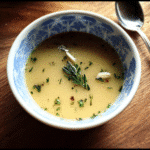
Healing Garlic Soup Recipe
Ingredients
- 4 TBSP butter (or ghee)
- 2 medium onions (sliced)
- 1 tsp thyme (or 2 tsp fresh)
- 1 tsp dried oregano
- 1 tsp dried basil
- ½ tsp salt
- ½ tsp black pepper
- ½ batch roasted garlic (equivalent of 4-5 bulbs of roasted garlic)
- 1 quart chicken broth
- 2 cups canned coconut milk (or other milk of choice)
For Garnish (optional):
- 2 TBSP fresh parsley (minced)
- ¼ cup fresh chives (chopped)
- 1 fresh lemon (cut into wedges)
Instructions
- In a large pot, melt the butter.
- Add the sliced onions.
- Saute over medium heat, stirring constantly until onions are translucent and golden.
- Add the herbs and spices and saute for an additional 2 minutes
- Add the roasted garlic and stir to combine.
- Add the chicken broth and bring to a simmer.
- Simmer for 15 minutes.
- Reduce heat to low and add the coconut milk.
- Using a stainless steel immersion blender, carefully blend the soup until smooth.
- If desired, garnish with fresh parsley and chives and squeeze a lemon wedge over each bowl. Serve warm.
Shopping Tips
When selecting your ingredients, freshness is key. Visit your local farmer’s market for the freshest garlic, greens, and herbs. Organic produce is often recommended for its lack of pesticides and superior flavor, especially for garlic and leafy greens, which can absorb chemicals more readily. If you’re shopping at a supermarket, look for garlic bulbs that are firm and heavy with no signs of sprouting. For onions, a good indicator of quality is a dry, papery skin and no soft spots.
Seasonal availability can also impact your ingredient choices. Garlic is generally available year-round, but fresh, local varieties may have peak seasons that enhance their flavor. Kale and spinach are also best when in season, which can vary based on your location. Using seasonal produce not only improves flavor but also supports local farmers.
Substitutions and Alternatives
Dietary restrictions or personal preferences may require some ingredient substitutions. For a vegan version of healing garlic soup, ensure you use vegetable broth and skip any animal products. If you’re sensitive to garlic, you might try using shallots or leeks, although the flavor will differ. For those who are gluten-sensitive, this recipe is naturally gluten-free, but always check your broth labels to ensure no gluten ingredients are present.
Storage is equally important; garlic can be stored in a cool, dry place for several weeks, while onions should be kept in a well-ventilated area. Fresh greens like kale and spinach may require refrigeration and should ideally be consumed within a week for maximum freshness. When you cook your healing garlic soup in larger batches, it’s perfect for freezing. Allow it to cool completely, then store it in airtight containers for up to three months. This makes it a convenient option for busy days!
Cost-saving tips include buying in bulk or purchasing items that are nearing their sell-by date and using them immediately. Many times, markets will offer discounts on produce that is still perfectly good but may not look as pristine as the new arrivals. This is a great way to save money while still enjoying delicious, wholesome ingredients.
Detailed Step-by-Step healing garlic soup Cooking Instructions
Distant Step-by-Step Healing Garlic Soup Cooking Instructions
Now that you have gathered all your ingredients, it’s time to dive into the cooking process. Making healing garlic soup is not only straightforward but also incredibly rewarding. In this section, I’ll guide you through each step, sharing tips and tricks that I’ve learned over the years to ensure your soup turns out perfectly every time.
Preparation Steps
- Mise en Place: Start by prepping all your ingredients. Mince the garlic cloves and set them aside in a small bowl. Dice the onion and potato, and chop the kale or spinach. Having everything ready will streamline your cooking process and help prevent any last-minute rushes.
- Quality Check: As you prepare, take a moment to inspect your ingredients. Freshness is key! Smell the garlic; it should have a strong aroma. Check the onions and potatoes for any soft spots that might indicate spoilage.
- Gather Your Tools: You’ll need a large pot or Dutch oven, a cutting board, a sharp knife, and a ladle for serving. If you have an immersion blender, keep it handy for blending the soup to your desired consistency.
Cooking Process
- Heat the Oil: In your large pot, heat the olive oil over medium heat. You want it hot enough to sauté but not so hot that it smokes. A good test is to drop a small piece of onion into the oil; if it sizzles, you’re ready.
- Sauté the Aromatics: Add the diced onions to the pot and sauté for about 5-7 minutes until they become translucent and slightly golden. This step is crucial as it builds the soup’s flavor foundation.
- Add the Garlic: Once the onions are ready, stir in the minced garlic. Sauté for an additional 1-2 minutes. Be careful not to let the garlic burn, as it can turn bitter. You’ll know it’s done when it smells heavenly!
- Add the Potato and Broth: Toss in the diced potato, followed by the broth. Bring the mixture to a gentle boil. The potato will help to thicken the soup, giving it a creamy texture without using any cream.
- Simmer: Reduce the heat to low and let the soup simmer for about 15-20 minutes or until the potatoes are tender. You can use this time to clean up your workspace, making the post-cooking process much easier.
- Add the Greens: Once the potatoes are tender, add in the chopped kale or spinach. Stir and let them wilt into the soup for about 5 minutes. This not only adds nutrients but also a beautiful green color.
- Season: Season your healing garlic soup with salt, pepper, and thyme. Taste and adjust the seasoning as needed. If you want a bit of brightness, squeeze in the juice of one lemon before serving.
Final Assembly
- Blend (Optional): If you prefer a smoother soup, use an immersion blender to blend the soup to your desired consistency. For a chunkier texture, leave it as is. For those without an immersion blender, carefully transfer small batches to a countertop blender, but let it cool slightly to avoid splatter.
- Serve: Ladle the soup into bowls and garnish with a sprinkle of nutritional yeast for a cheesy flavor if desired. You can also add a drizzle of olive oil or a sprinkle of fresh herbs like parsley.
- Storing Leftovers: If you have any leftovers, let the soup cool completely before transferring it to airtight containers. Store in the refrigerator for up to a week or in the freezer for up to three months. When reheating, add a splash of water or broth if it thickens too much.
Cooking healing garlic soup is not just about following a recipe; it’s about creating a nourishing experience in your kitchen. As you chop, sauté, and stir, allow the aromas to envelop your home, filling it with warmth and comfort. You’ll find that with just a little bit of time and love, you can create a bowl of soup that is truly healing.

Professional Tips and Techniques for healing garlic soup
When it comes to crafting a delightful bowl of healing garlic soup, there’s more than just following a recipe. It’s about infusing your cooking with techniques and tips that elevate your dish to the next level. Drawing from my own kitchen experiences, I’ve curated a collection of professional tips and techniques that will help you master this comforting soup.
Professional Techniques
First and foremost, let’s talk about the garlic itself. The star of the show in healing garlic soup is, of course, the garlic. The way you prepare it can significantly affect the soup’s flavor. While raw garlic is pungent and sharp, roasting it mellows the taste, creating a rich, sweet profile. To roast garlic, simply slice the top off a whole bulb, drizzle it with olive oil, wrap it in foil, and bake at 400°F for about 30-40 minutes until soft. You can then squeeze the cloves out, and they’ll blend beautifully into your soup.
When sautéing your garlic, consider using a combination of olive oil and butter. The olive oil provides a robust flavor, while the butter adds creaminess. Start with a low heat to avoid burning the garlic. The goal is to gently coax out the flavor, so patience is key!
Another professional technique is to use a high-quality broth. Homemade broth is always the best option, but if time doesn’t allow, look for low-sodium store-bought varieties. A good broth will enhance the depth of flavor in your healing garlic soup, making it feel heartier and more nourishing.
Troubleshooting Guide
Even with the best techniques, things can go awry in the kitchen. One common issue when making healing garlic soup is the garlic being too overpowering. If you find that your soup has a harsh garlic flavor, consider adding a splash of acidity, such as lemon juice or apple cider vinegar. This can help balance the flavors and cut through the richness.
Another common problem is a soup that’s too thick. If you’ve accidentally added too many ingredients or not enough broth, simply adjust by adding more liquid. You can use water, broth, or even a splash of white wine for added flavor. On the flip side, if your soup is too thin, consider thickening it with a potato or by blending some of the soup to create a creamy texture.
For those who enjoy a bit of spice, if your healing garlic soup ends up being too bland, adding herbs like thyme, rosemary, or even a pinch of red pepper flakes can elevate the dish. Remember, taste as you go!
Presentation Tips
While flavor is paramount, presentation plays a significant role in the overall experience of your healing garlic soup. A simple yet elegant way to serve it is in a rustic bowl, garnished with a drizzle of high-quality olive oil and a sprinkle of fresh parsley or chives. You can also add croutons for texture and a pop of color.
Consider serving the soup with a side of crusty bread or a fresh salad for a complete meal. When plating, aim for a clean presentation—wipe the edges of the bowl for a polished look. You could even add a swirl of cream or a dollop of yogurt for an extra touch of elegance.
Finally, let’s not forget about pairings! For a cozy evening, a light white wine, such as Sauvignon Blanc, complements the soup beautifully. If you prefer non-alcoholic options, a sparkling water with a slice of lemon can refresh your palate.
Incorporating these professional tips and techniques into your healing garlic soup preparation will undoubtedly enhance your cooking experience and the final product. Embrace the process, and remember that each bowl is a step towards mastering this comforting, nutritious dish.
Creative Variations and Adaptations of healing garlic soup
Exploring the world of healing garlic soup doesn’t mean you have to stick to a single recipe. The beauty of this dish lies in its versatility, and I’d love to share some creative variations and adaptations that can make your cooking experience even more delightful.
Seasonal Variations
Seasonality plays a significant role in cooking, especially with a dish as adaptable as healing garlic soup. In spring, consider incorporating fresh asparagus and peas, which add a vibrant color and sweetness that brightens the soup. Simply sauté these vegetables along with the garlic for a fresh twist.
Summer brings a bounty of vegetables; try adding fresh tomatoes or zucchini for a lighter, more refreshing soup. Roasting the tomatoes beforehand can intensify their flavor, giving your soup a richer taste. Fall is the perfect time to experiment with squashes, such as butternut or acorn squash, which add a natural sweetness and creaminess.
In winter, you might want to include hearty greens like kale or Swiss chard. These not only contribute to the nutritional profile of your soup but also provide a beautiful contrast in color and texture. Just be sure to add them towards the end of the cooking process to keep their vibrant color.
Dietary Adaptations
One of the best things about healing garlic soup is its adaptability to various dietary needs. For those following a keto diet, you can easily keep the soup low in carbs by avoiding potatoes and using cauliflower instead, which can create a creamy texture when blended.
If you’re cooking for vegans, substitute vegetable broth for chicken broth and omit any dairy elements like cream or butter. You can still achieve a creamy consistency by blending in soaked cashews or coconut milk, which adds a lovely richness without the use of animal products.
For gluten-free options, ensure that any bread or croutons you serve are gluten-free. The soup itself is naturally gluten-free, so you can enjoy it without worry!
Creative Twists
Don’t be afraid to get adventurous with your healing garlic soup! One delightful twist is to introduce international flavors. For instance, adding miso paste can give your soup a unique umami flavor reminiscent of Japanese cuisine, while a sprinkle of curry powder can provide an aromatic, Indian-inspired soup.
You might also experiment with cooking methods – while the stovetop is traditional, consider using a slow cooker for a hands-off approach. Just add your ingredients in the morning and let them simmer throughout the day, creating a rich, deeply flavored soup by dinner time.
If you’re looking to transform leftovers, consider using your soup as a base for a pasta dish or grain bowl. Add sautéed vegetables or proteins, and you’ll have an entirely new meal that still highlights the comforting flavors of your healing garlic soup.
By exploring these variations and adaptations, you can keep your healing garlic soup exciting and fresh, ensuring that it remains a staple in your kitchen all year round. Embrace the creativity, and let your taste buds guide you on this flavorful journey!
Storage, Reheating, and Meal Prep for healing garlic soup
When you’ve prepared a warm, comforting bowl of healing garlic soup, the last thing you want is for it to go to waste. Proper storage and reheating techniques ensure you can savor this delicious soup long after it’s made. Whether you’re cooking for one or a family feast, knowing how to effectively store, reheat, and meal prep your healing garlic soup can make all the difference.
Short-term Storage
After you’ve made your healing garlic soup, let it cool to room temperature. This is crucial because placing hot soup directly into the fridge can raise the temperature inside, potentially compromising the safety of other foods. Once cool, transfer the soup into airtight containers. Glass containers with tight-sealing lids work best, as they are non-reactive and won’t absorb odors. However, BPA-free plastic containers can also be used. Make sure to leave some space at the top of the container; soups tend to expand when frozen.
In the refrigerator, your healing garlic soup will keep well for about 3 to 5 days. To prevent spoilage, always use clean utensils when serving the soup from its storage container. This practice helps avoid contamination and extends the life of your dish.
Freezing and Long-term Storage
If you’ve made a large batch of healing garlic soup, or if you’re simply looking to prepare meals ahead of time, freezing is an excellent option. To freeze your soup, start by allowing it to cool completely. Then, portion it into freezer-safe containers or freezer bags. If using bags, squeeze out as much air as possible before sealing to minimize freezer burn, which can affect the texture and flavor.
For best results, consume frozen healing garlic soup within 3 to 4 months. While it can technically last longer, the quality may diminish over time. When labeling your containers, include the date and contents to keep track of what you have in your freezer. This practice is especially helpful when you have multiple soups stored away.
Reheating Best Practices
When it comes time to enjoy your healing garlic soup again, reheating it properly is key to maintaining its rich flavor and creamy texture. For soups stored in the refrigerator, transfer the amount you wish to reheat into a saucepan. Heat over medium heat, stirring occasionally, until it is heated through. Avoid bringing it to a rapid boil, as this can alter the consistency.
If you’re reheating frozen soup, it’s best to let it thaw in the refrigerator overnight before reheating. If you’re short on time, you can reheat it directly from the freezer; just be prepared to increase the cooking time. Another option is to use the microwave for reheating. Place the soup in a microwave-safe bowl, cover it loosely to allow steam to escape, and heat in short intervals, stirring in between to ensure even heating.
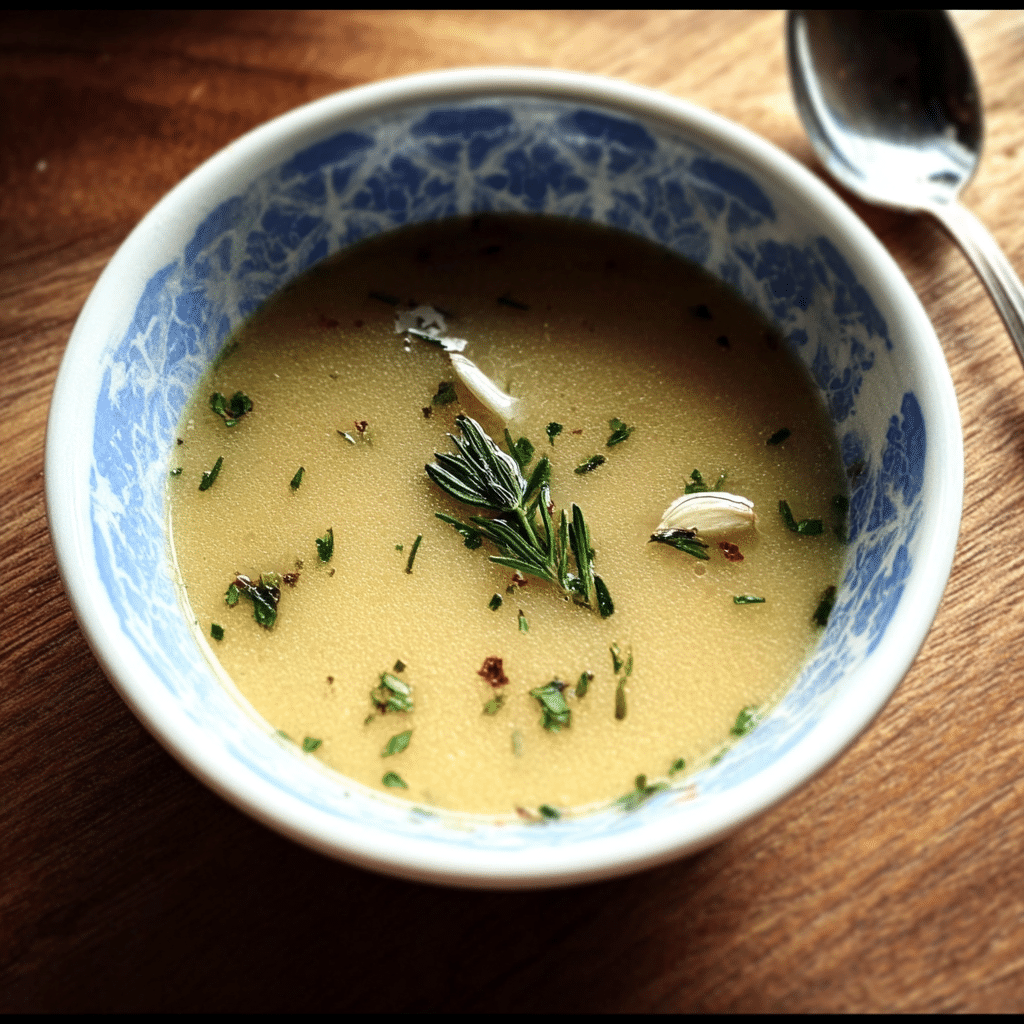
Remember, when reheating, always check the internal temperature of the soup. It should reach at least 165°F (74°C) to ensure it is safe to consume. If you notice the soup has thickened after freezing, don’t hesitate to add a splash of vegetable broth or water during reheating to restore its desired consistency.
Meal prepping with healing garlic soup is a fantastic way to ensure you always have a nutritious meal on hand. You can make a large batch on a Sunday, portion it out, and have ready-to-go lunches or dinners throughout the week. This not only saves time but also encourages healthier eating habits, as you’re less likely to reach for takeout when a comforting bowl of soup is just minutes away.
When planning your meal prep, consider pairing your healing garlic soup with a fresh salad or whole-grain bread for a complete meal. Store the salad components separately to prevent sogginess, and you’ll have a delicious, well-rounded meal at your fingertips.
Lastly, always prioritize food safety. If you notice any signs of spoilage, such as an off smell or unusual texture, it’s best to err on the side of caution and dispose of the soup. Following these storage and reheating guidelines will ensure you can enjoy your healing garlic soup safely and deliciously.
Nutritional Benefits and Health Information
Healing garlic soup is not just a delicious dish; it’s a powerhouse of nutrition packed with health benefits. Understanding the nutritional profile of this soup can elevate your cooking experience and enhance your appreciation for its ingredients. Let’s dive into the details of what makes healing garlic soup not only comforting but also a boon for your health.
Nutritional Profile
At its core, healing garlic soup typically contains garlic, broth (vegetable or chicken), and often includes ingredients like onions, herbs, and sometimes cream or other vegetables. A standard serving (about 1 cup) of healing garlic soup can contain approximately 150-200 calories, depending on the specific ingredients used.
Here’s a brief breakdown of the macronutrients you might find in a serving:
- Calories: 150 – 200
- Protein: 4 – 7 grams
- Carbohydrates: 20 – 30 grams
- Fat: 5 – 10 grams
Garlic, the star ingredient, is low in calories but high in flavor and nutrition. It is rich in vitamins C and B6, manganese, and selenium. Additionally, garlic contains allicin, a compound known for its numerous health benefits.
Health Benefits
The healing properties of garlic have been celebrated for centuries. In many cultures, garlic is considered a natural remedy for various ailments. Research suggests that garlic may boost the immune system, making it particularly beneficial during cold and flu season. Its antimicrobial properties can help combat infections, while its anti-inflammatory effects can aid in reducing inflammation in the body.
Moreover, garlic is linked to heart health. Studies have shown that regular consumption of garlic can help reduce blood pressure, lower cholesterol levels, and improve overall cardiovascular function. This makes healing garlic soup not just a comforting dish but a heart-healthy option as well.
Dietary Considerations
When it comes to dietary considerations, healing garlic soup is quite versatile. It can easily be adapted to fit various dietary needs. For those who are vegetarian or vegan, simply use vegetable broth instead of chicken broth and omit any dairy components. If you’re gluten-sensitive, ensure that the broth and any added ingredients are certified gluten-free.
As for allergens, garlic soup is typically free from the most common allergens, but it’s always best to check your specific ingredients. For example, if you choose to add cream or any dairy, this could pose an issue for those who are lactose intolerant.
If you are watching your sodium intake, consider making your own broth or using low-sodium broth options to keep the overall salt content in check. This allows you to enjoy your healing garlic soup without compromising your health goals.
In terms of vitamins and minerals, healing garlic soup is a fantastic source of various nutrients. Garlic is particularly high in antioxidants, which combat oxidative stress in the body. The broth used in the soup can also contribute essential minerals, depending on whether it’s homemade or store-bought.
For those looking to modify the soup for healthier options, consider adding more vegetables such as spinach, kale, or carrots to increase fiber content and enhance the nutritional value. You can also substitute full-fat cream with coconut milk or a nut-based cream for a lighter version of the soup. This not only alters the calorie count but also adds a unique flavor twist.
In summary, healing garlic soup is more than just a bowl of warmth; it’s a nutritious, health-promoting dish that can easily fit into a variety of dietary lifestyles. Whether you’re enjoying it for its flavor, its healing properties, or both, you can feel good about your choice. Embrace the healing power of garlic and let this comforting soup nourish your body and soul.
Frequently Asked Questions About Healing Garlic Soup
What is a healing garlic soup recipe?
A healing garlic soup recipe typically includes a base of broth, a generous amount of garlic, and various herbs and spices to enhance flavor and therapeutic benefits. Start by sautéing chopped onions and garlic in olive oil until fragrant, then add vegetable or chicken broth, and simmer it with herbs like thyme or parsley. You can blend the soup for a creamy texture or leave it chunky for added nutrients. Experiment with additional ingredients such as leeks, carrots, or potatoes to enrich the flavor and nutritional profile. Serve it warm, garnished with fresh herbs for a delightful finish.
Can I use coconut milk in my healing garlic soup?
Yes, incorporating coconut milk into your healing garlic soup can add a creamy texture and a subtle sweetness that complements the robust flavor of garlic. To do this, add a can of full-fat coconut milk to the soup during the last 10 minutes of cooking to allow the flavors to meld. This not only enhances the taste but also increases the soup’s nutritional value by providing healthy fats and additional vitamins. Be mindful of the quantity; using too much coconut milk can overpower the garlic flavor, so start with half a can and adjust according to your taste preference.
What are the benefits of healing garlic soup?
Healing garlic soup offers a myriad of health benefits, primarily due to the high concentration of garlic, which is known for its immune-boosting properties. Garlic contains allicin, a compound that has been shown to have antiviral and antibacterial effects, making it great for fighting off colds and infections. Additionally, the anti-inflammatory properties of garlic can help reduce inflammation in the body, aiding in recovery. The warm broth also provides comfort and hydration, making it an ideal dish when you’re feeling under the weather. For added benefits, consider including other nutritious ingredients like ginger or turmeric, which further enhance its healing properties.
What is 100 clove garlic soup?
100 clove garlic soup is a bold and flavorful dish that features an astonishing amount of garlic—specifically, 100 cloves! This recipe transforms the pungent raw garlic into a mellow and sweet flavor through slow cooking. To make it, start by roasting the cloves until they’re soft and caramelized, which takes about 30-40 minutes at 400°F (200°C). Then, blend the roasted garlic with broth and other veggies for a smooth consistency. This soup is not only rich in flavor but also packed with the health benefits of garlic, making it a unique and therapeutic option for garlic lovers. Just remember, while it sounds intimidating, the roasting process significantly reduces the sharpness of the garlic, resulting in a delightful and comforting dish.
Conclusion: Mastering the Perfect healing garlic soup
Creating the perfect healing garlic soup is more than just following a recipe—it’s about understanding the techniques, ingredients, and cultural significance behind this beloved dish. Throughout this comprehensive guide, we’ve explored everything from the historical origins to modern variations, ensuring you have all the knowledge needed to make this recipe your own.
Whether you’re a beginner cook or an experienced chef, the techniques and tips we’ve shared will help you create a healing garlic soup that’s not only delicious but also meaningful. Remember that cooking is a journey of discovery, and each time you make this dish, you’ll learn something new.
We encourage you to experiment with the variations we’ve discussed, adapt the recipe to your dietary needs, and most importantly, share it with the people you love. Food has the incredible power to bring people together, and Healing Garlic Soup is the perfect dish to create lasting memories around your dinner table.

